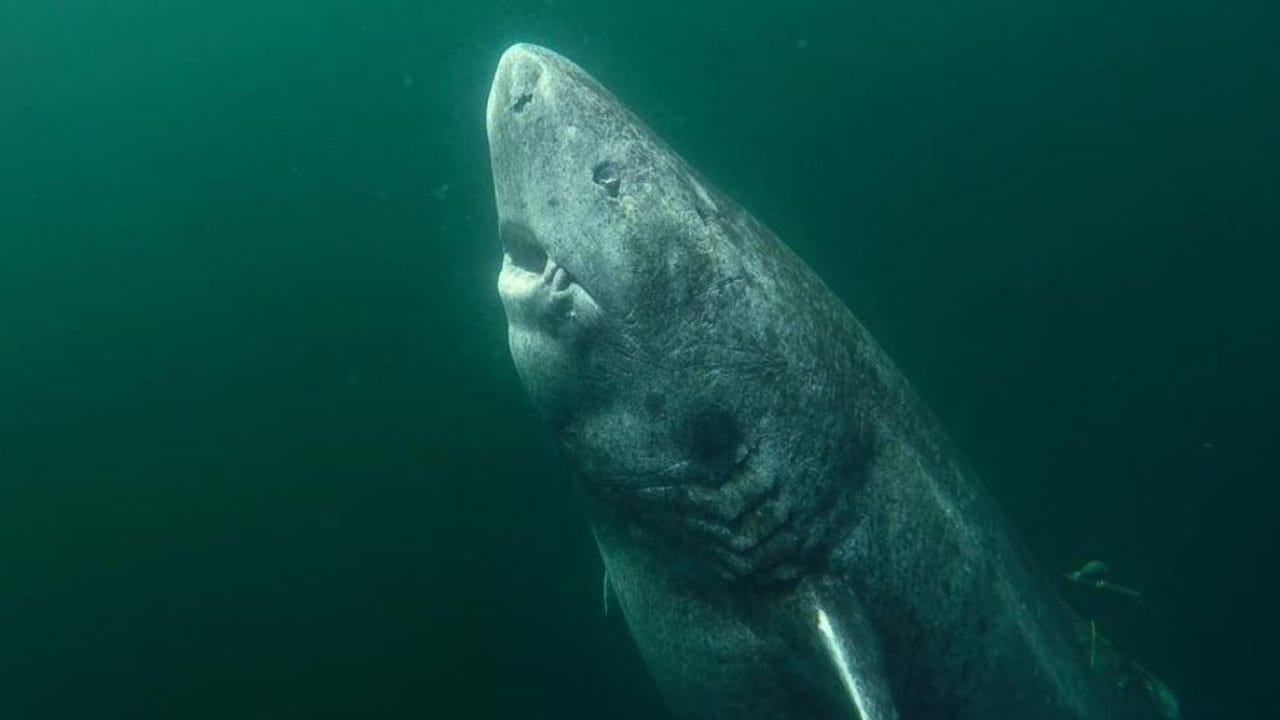A 500-Year-Old Shark and the Unfinished Reckoning with Slavery
This shark has been swimming since before the transatlantic slave trade began, a reminder that the past isn’t gone—it’s still circling us.
The discovery of a 500-year-old Greenland shark—a creature that has been alive since before America as we know it even existed—hit me in a way I didn’t expect. It left me emotionally overwhelmed, like when a random song catches you off guard and suddenly you’re crying at a red light. I couldn’t quite pinpoint what it was about its sheer longevity that unsettled me.
Then it clicked.
That shark is a living timeline, a reminder that the past we’re told is distant isn’t distant at all. The history that shaped this country—the history that Musk/Trump and their MAGA loyalists want to erase—is painfully close, and its legacy is still fresh.
This shark was likely born around 1525, nearly a century before enslaved Africans were stacked like cordwood, chained into the holds of ships, and brought to North America in 1619. Over its long life, it has navigated the waters that carried millions of kidnapped Africans across the Atlantic. For nearly 400 years, countless people perished aboard slave ships—whether from disease, execution, or suicide—and were thrown overboard. The numbers were so vast that sharks learned to follow the transatlantic slave routes, feeding on the bodies of the dead. This gruesome abundance of human remains permanently changed shark migration patterns—so much so that even now, sharks still follow those same routes, expecting to feast.
The sharks that followed slave ships became so common that sailors feared falling overboard, knowing they would be devoured within moments. Survivors of the Middle Passage recalled seeing the same sharks trailing their vessels for weeks, a constant reminder of the horror unfolding at sea. These predators, conditioned by centuries of human carnage, passed down their learned behavior through generations.
Think about that. The transatlantic slave trade was so brutal, so vast, that it reshaped the natural world. And just as sharks still swim those old routes, we are still living with the consequences of slavery today.
Even though the slave trade was legally abolished, its legacy remains—in systemic racism, health care inequities, economic exploitation, mass incarceration, and the racial wealth gap that persists today. And instead of dealing with that reality, white supremacists—both elected and otherwise—are trying to erase it. They ban books. They censor history. They attack DEI. They gut education. They want to silence the truth because acknowledging it would mean reckoning with the ongoing harm.
But history doesn’t disappear just because they try to bury it. The sharks still swim. The past still ripples forward, shaping the present. And just like the enslaved people who fought for freedom, just like every movement that has risen up against oppression, we must resist. Because this fight isn’t just about the past—it’s about the future.






Exceptionally crafted piece Nadine! Read a post earlier stating that Cuba was the capital of the slave trade. The racism, misogyny and hatred that existed in the period you described, is alive and well here today. Colour me disgusted!!
Wow, that is an amazingly thought provoking piece. I am so grateful to have come across it. Thank you, thank you.